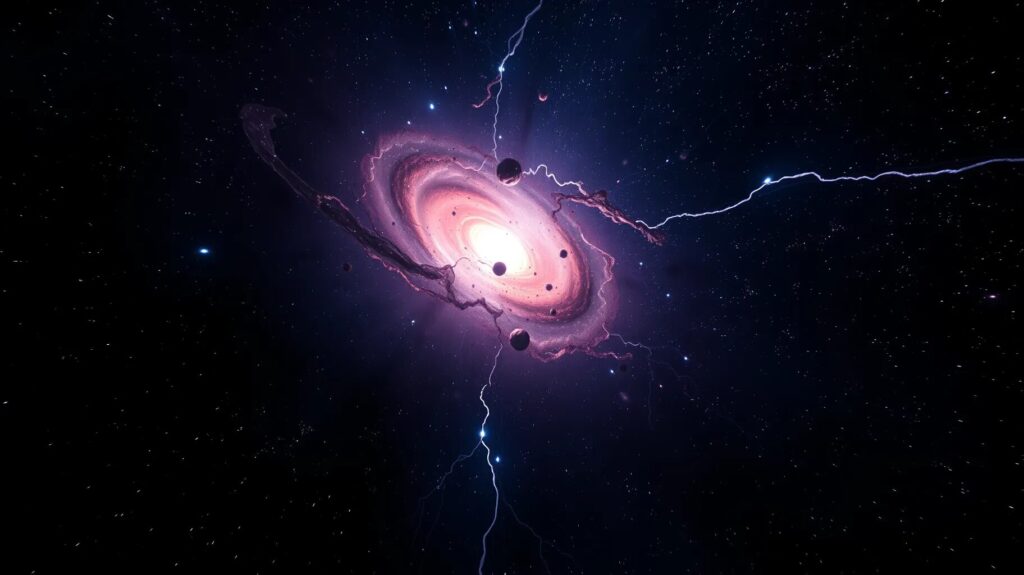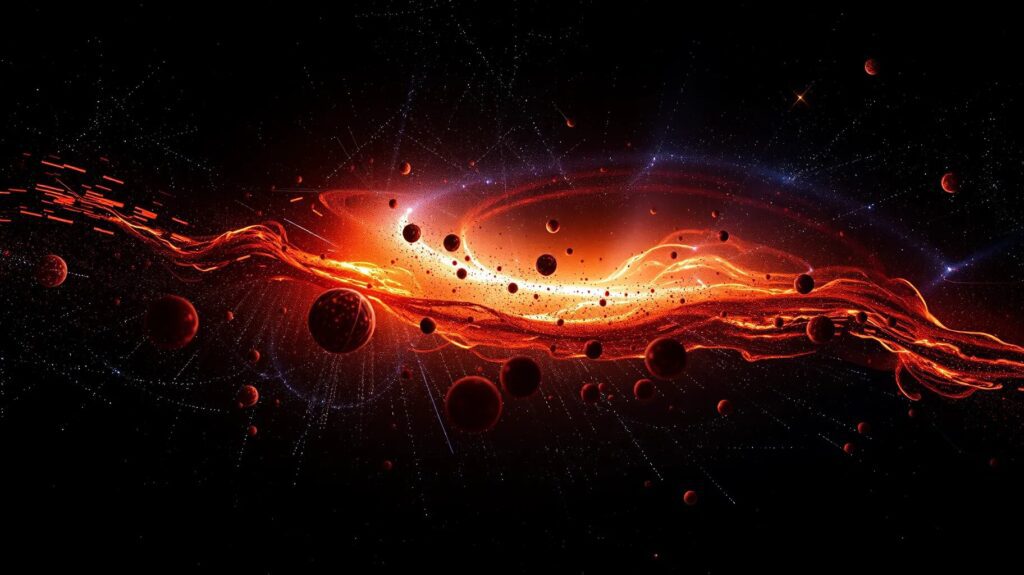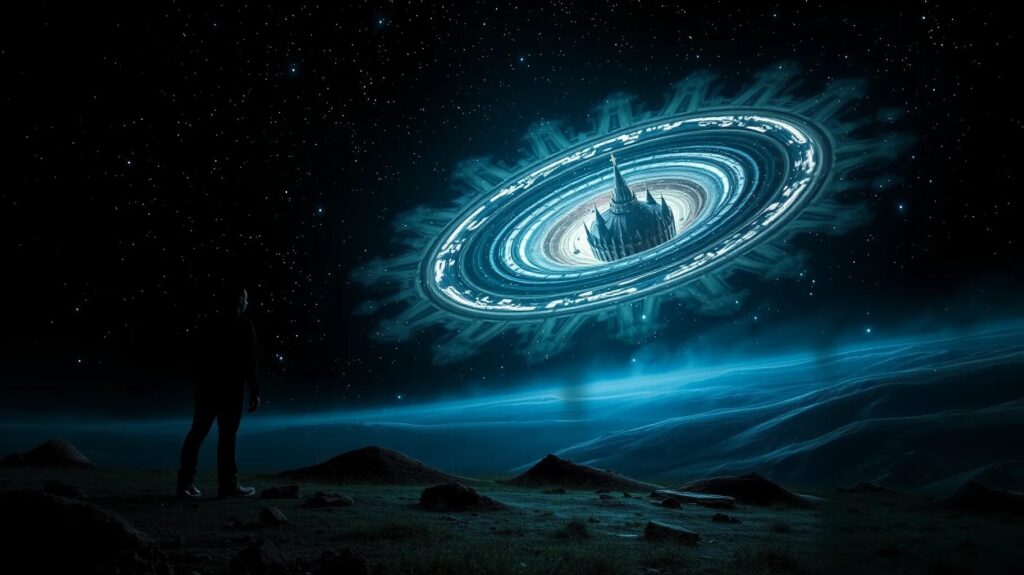
Cutting-edge research is delving into dark matter mysteries, and artificial intelligence is leading the charge. This recent discovery of the “ghost particle” could reshape how we understand the universe. Here’s everything you need to know about this cosmic breakthrough.
What Is Dark Matter and Why Does It Matter?
The Invisible Force Holding Galaxies Together
Dark matter is a mysterious substance that doesn’t emit light or energy, making it invisible to the naked eye. Despite being elusive, it’s believed to make up about 27% of the universe’s total mass and energy. Without it, galaxies wouldn’t hold together as they do.
The Role of AI in Unlocking Cosmic Secrets
Traditional methods have struggled to detect dark matter. Enter AI, which can sift through massive datasets from telescopes and particle accelerators to find patterns humans miss. This capability has been key in spotting the ghost particle.
What Is a Ghost Particle?
A Potential Messenger from Dark Matter
The ghost particle is a nickname for neutrinos, subatomic particles that barely interact with regular matter. They’ve intrigued scientists for years as possible clues to understanding dark matter.
Why AI Was Crucial in Its Discovery
Neutrinos are hard to detect because they pass through almost everything unimpeded. Using advanced AI algorithms, researchers identified patterns in data from neutrino detectors, finally narrowing in on what could be direct evidence of a link to dark matter.
How AI Made the Breakthrough Possible
Pattern Recognition in Massive Datasets
Neutrino detectors generate terabytes of data every day. It would take decades for scientists to analyze this manually. AI accelerates this process, filtering noise and pinpointing key interactions in real time.
Machine Learning Algorithms on the Front Lines
By training neural networks on known particle interactions, researchers developed systems capable of predicting where and how ghost particles might emerge. This breakthrough isn’t just about speed—it’s about seeing the unseen.

What Does This Mean for Dark Matter Research?
A New Frontier in Cosmology
The discovery of the ghost particle has rekindled excitement in the search for dark matter. Researchers now have a potential pathway to uncover the building blocks of the universe.
Implications for Physics as We Know It
If ghost particles are indeed connected to dark matter, this could challenge existing theories, paving the way for a new standard model of physics. It’s not just about understanding the cosmos; this could influence everything from quantum computing to energy production.
Could This Discovery Solve the Dark Matter Puzzle?
A Step Closer to Understanding the Universe
While this is a monumental step, it’s not the endgame. Scientists still need to replicate and validate these findings. If confirmed, it could open the floodgates to new discoveries about the universe’s hidden structure.
The Role of Collaboration in Future Discoveries
This milestone underscores the importance of interdisciplinary research. AI experts, physicists, and engineers will need to continue working together to solve the biggest cosmic mysteries.

Tools and Experiments Behind the Ghost Particle Discovery
Neutrino Detectors: Catching the Elusive
To study ghost particles, scientists use special equipment like neutrino observatories deep underground or submerged in water. These detectors, such as the IceCube Neutrino Observatory in Antarctica, rely on massive arrays of sensors to catch faint flashes of light caused by neutrino interactions.
But these interactions are rare. Out of billions of particles passing through the detector every second, only a handful leave behind a detectable signature.
AI-Powered Innovations in Neutrino Detection
Traditional methods struggled to interpret the faint signals among noise. Here’s where AI innovations shine:
- Noise Reduction: AI algorithms filter out background data, identifying only genuine particle events.
- Event Reconstruction: Machine learning helps determine the energy, direction, and type of particle interaction, creating a clearer picture of the neutrino’s journey.
This synergy of cutting-edge hardware and AI-powered software marks a new era in neutrino research.
Key AI Algorithms and Techniques Used
Deep Learning for Particle Tracking
Deep learning neural networks, trained on existing particle physics data, were instrumental in identifying patterns. AI wasn’t just crunching numbers—it was learning the nuances of particle behavior.
Reinforcement Learning for Anomaly Detection
AI systems were tasked with spotting anomalies in the massive datasets. These outliers often indicated a rare neutrino interaction or an entirely new particle event.
With such precision, AI has become the ultimate detective in dark matter research.
Challenges in Detecting Ghost Particles
The Overwhelming Background Noise
One of the biggest hurdles is that neutrino signals are faint, often lost in the sea of cosmic rays and terrestrial radiation. AI must distinguish between these signals with near-perfect accuracy to avoid false positives.
The Scale of Data
Neutrino detectors produce petabytes of data annually. Without AI, processing this information would be next to impossible. Even with advanced algorithms, researchers face constant challenges in refining models to keep up with new discoveries.
What’s Next for Dark Matter and AI Collaboration?
New Experiments on the Horizon
As AI proves its worth, new neutrino observatories are in the works. Facilities like the Deep Underground Neutrino Experiment (DUNE) aim to test these theories on an even larger scale, hoping to further connect ghost particles to dark matter.
AI’s Expanding Role in Space Research
Beyond dark matter, AI is being deployed to study gravitational waves, black holes, and exoplanets. The tools developed in neutrino research may have far-reaching applications in understanding the universe.
This breakthrough discovery is just the beginning. With AI continuing to revolutionize astrophysics, the mysteries of dark matter may finally come to light—one ghost particle at a time.
Recent Milestones in Dark Matter Research
AP News
Mysteries of universe revealed? Hardly. But CERN still fascinates, discovers on its 70th anniversary
Reuters
Findings by dark energy researchers back Einstein’s conception of gravity
Resources
1. CERN: Large Hadron Collider Experiments
- CERN’s website provides comprehensive information on the Large Hadron Collider (LHC) and its experiments, including efforts to detect dark matter particles.
- CERN’s LHC Experiments
2. NASA: Dark Matter and Dark Energy
- NASA offers detailed explanations of dark matter, dark energy, and their significance in understanding the universe’s structure.
- NASA Dark Matter Overview
3. Journal of High Energy Physics (JHEP)
- Leading journal publishing papers on particle physics, including those focused on AI applications in dark matter research.
- JHEP Journal
4. MIT Technology Review: AI and the Universe
- This publication often covers the intersection of AI and cosmic research, with articles exploring AI’s growing role in physics.
- MIT Technology Review
5. Fermilab: Dark Matter Research
- Fermilab is one of the key institutions involved in dark matter research. Their website provides updates on their experiments and breakthroughs.
- Fermilab’s Dark Matter Research
6. ScienceDirect: AI in Physics
- Access peer-reviewed articles that explore the use of machine learning and AI in theoretical and experimental physics.
- ScienceDirect
7. Physics World: AI in Particle Physics
- Physics World often publishes insights into how AI is transforming particle physics, including coverage of dark matter experiments.
- Physics World AI and Physics
8. The Royal Society: Artificial Intelligence in Scientific Research
- A resource hub for papers and discussions on how AI is being integrated into various scientific fields, including physics.
- The Royal Society
